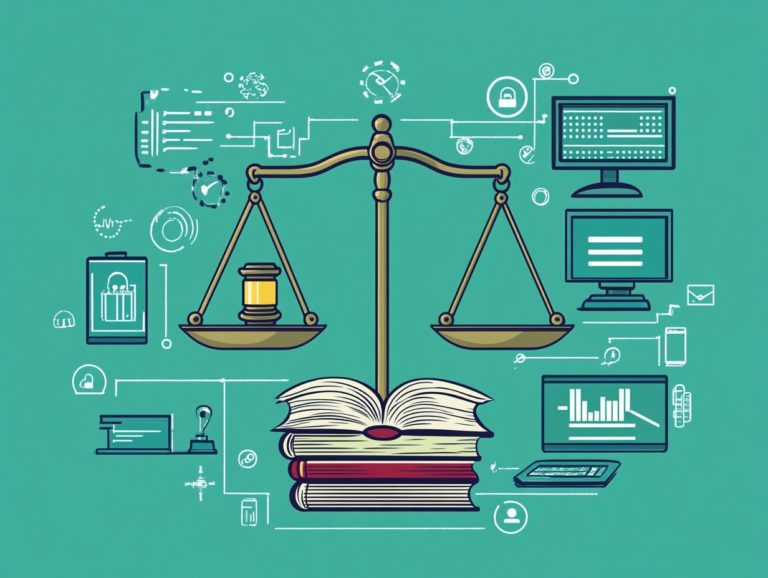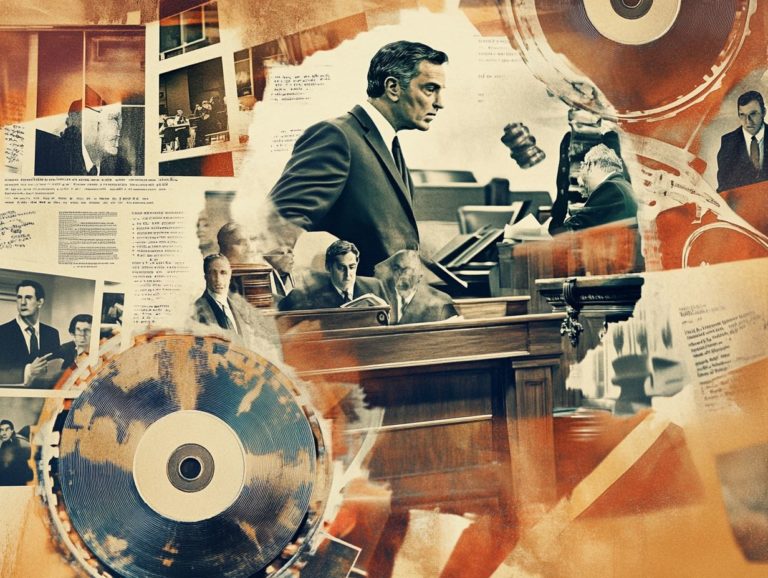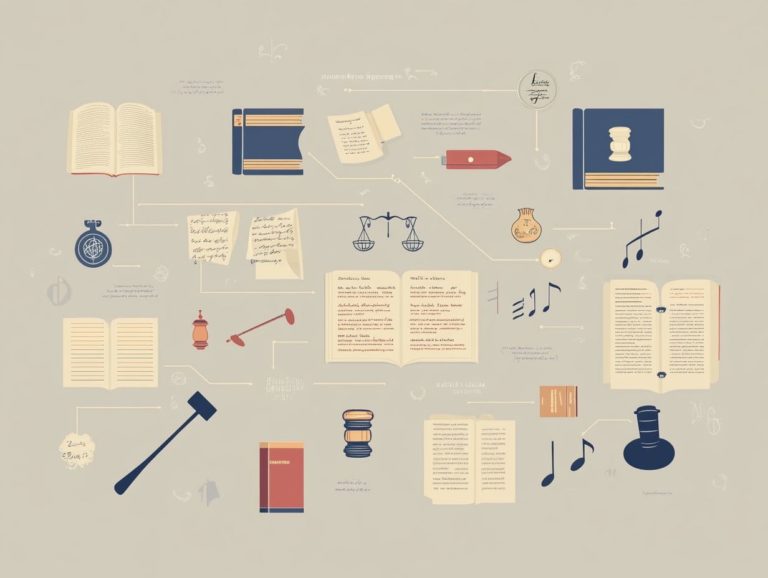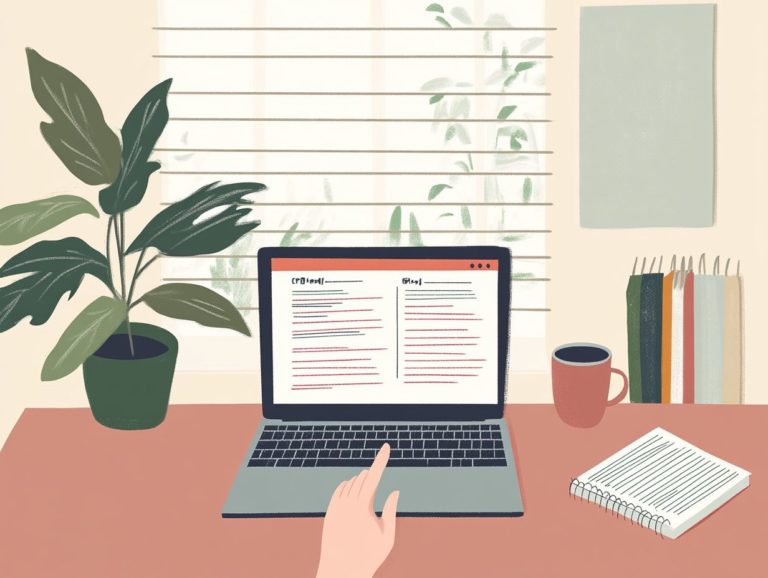The Relationship Between Copyright and Fair Trade
Copyright and fair trade are important in creating the creative and commercial landscapes of society.
Copyright protects the rights of creators, ensuring you recognize and compensate them for their work. Fair trade champions equitable practices in commerce, empowering both producers and consumers.
Let s dive into the definitions and significance of these concepts, exploring their intersection, real-world applications, and the challenges they face.
By examining current trends and potential future shifts, you will discover how these frameworks can coexist and mutually reinforce one another in today s vibrant world.
Contents
- Key Takeaways:
- Understanding Copyright and Fair Trade
- Why Copyright and Fair Trade Matter
- The Intersection of Copyright and Fair Trade
- Examples of Copyright and Fair Trade in Action
- Challenges and Controversies Surrounding Copyright and Fair Trade
- Future Outlook for Copyright and Fair Trade
- Frequently Asked Questions
- How do copyright and fair trade relate to each other?
- How does copyright impact fair trade?
- What is the role of fair trade in protecting copyright?
- How do international laws affect the relationship between copyright and fair trade?
- Are there any conflicts between copyright and fair trade?
- How can consumers support the relationship between copyright and fair trade?
Key Takeaways:
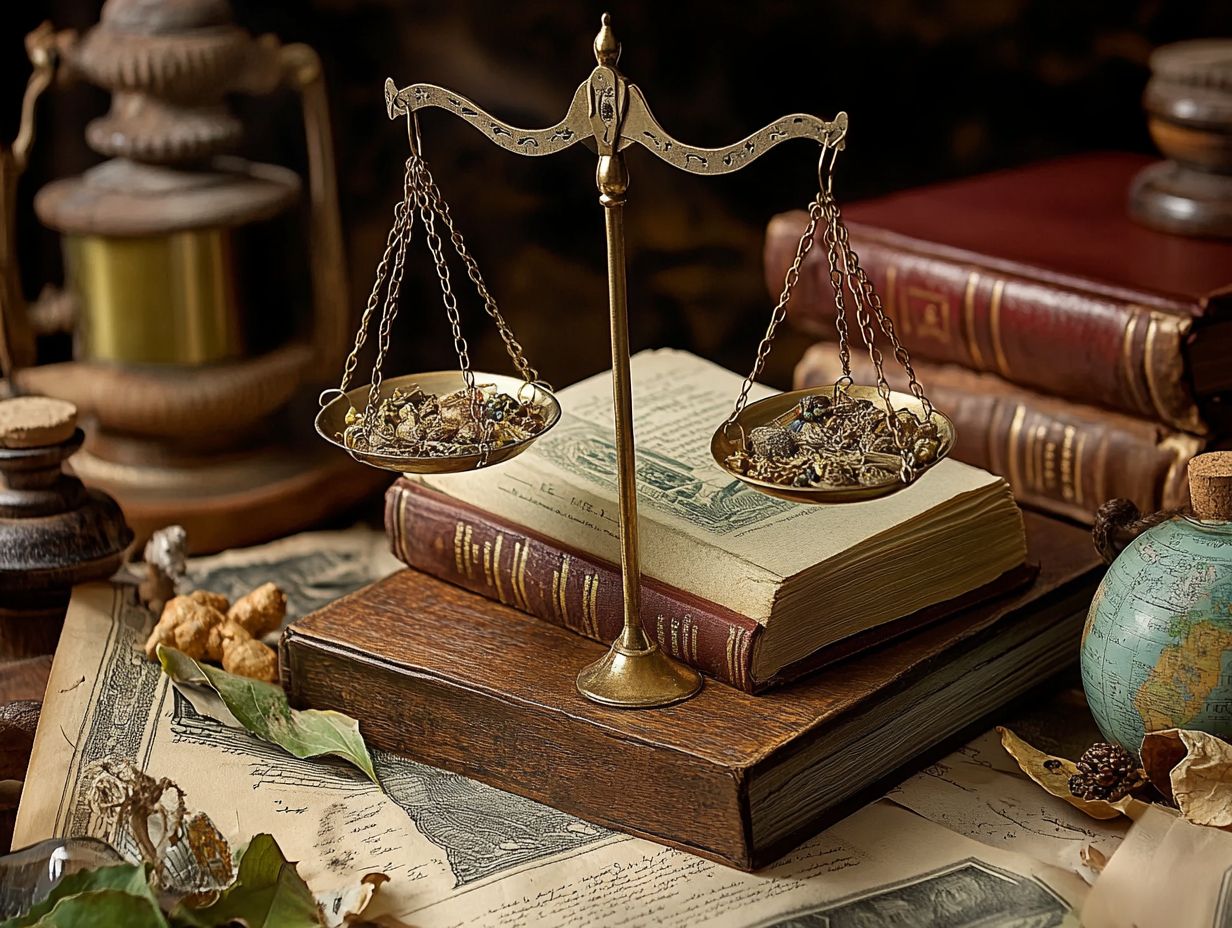
Understand how copyright and fair trade protect creators and promote fairness!
Both copyright and fair trade are crucial in protecting creators and promoting fairness in the creative industry.
The intersection of copyright and fair trade highlights the relationship between copyright and plagiarism, allowing for a balance between protecting original works and supporting fair trade practices.
Despite challenges and controversies, the future outlook for copyright and fair trade is positive, with potential changes and advancements in the industry.
Understanding Copyright and Fair Trade
Grasping the intricate relationship between copyright law and fair use is essential for you as a creator, educator, or even a member of the public. This understanding defines what constitutes permissible use of original works without encroaching on the exclusive rights of copyright owners.
Copyright law also protects both creative and factual works. It makes a clear distinction between use for profit and use for educational or personal purposes. It recognizes transformative uses that can enrich educational endeavors and contribute meaningfully to broader cultural conversations.
Definitions and Key Concepts
When exploring copyright and fair use, it’s vital for you to grasp key concepts like copyright law, which safeguards original works, and fair use, a doctrine permitting limited use of copyrighted material without permission under specific conditions. Understanding these ideas is essential for anyone navigating the intricate landscape of intellectual property.
Take, for instance, “transformative use,” which means utilizing a work in a way that adds new expression or meaning. A classic example would be a parody that comments on the original piece.
On the flip side, copyright infringement occurs when you use a work without authorization. For example, reproducing a song or artwork in its entirety without permission is considered infringement. These distinctions defend creators’ rights and enlighten users on how to appropriately engage with intellectual property.
Why Copyright and Fair Trade Matter
The significance of copyright and fair trade rests in their power to safeguard creators and cultivate a fair marketplace.
By allowing copyright owners to uphold their exclusive rights, these principles create a framework that fosters innovation and creativity, free from the looming threat of copyright infringement.
Striking this balance is essential for preserving the market value of creative works. It ensures that you, as a creator, can fully enjoy the rewards of your contributions.
Protecting Creators and Promoting Fairness
Protecting creators through copyright law ensures that you, as a copyright owner, retain control over your original works. This allows you to capitalize on your creativity while promoting fairness in the marketplace through doctrines like fair use.
This legal framework grants you exclusive rights to reproduce, distribute, and display your creative works. It also gives you the power to negotiate licensing agreements, enabling you to generate income through royalties.
The principle of fair use introduces a nuanced balance. It allows for limited use of copyrighted material without permission in certain contexts, such as commentary, criticism, or educational purposes.
For example, when a journalist quotes a passage from a novel to analyze its themes, it exemplifies non-commercial fair use. On the other hand, a filmmaker incorporating a song into a documentary represents a commercial application.
This duality fosters an environment where your creativity can flourish, ensuring that both you and the public benefit from a rich cultural landscape.
For more information on how copyright and fair trade affect you, consider exploring additional resources or engaging with your community!
The Intersection of Copyright and Fair Trade
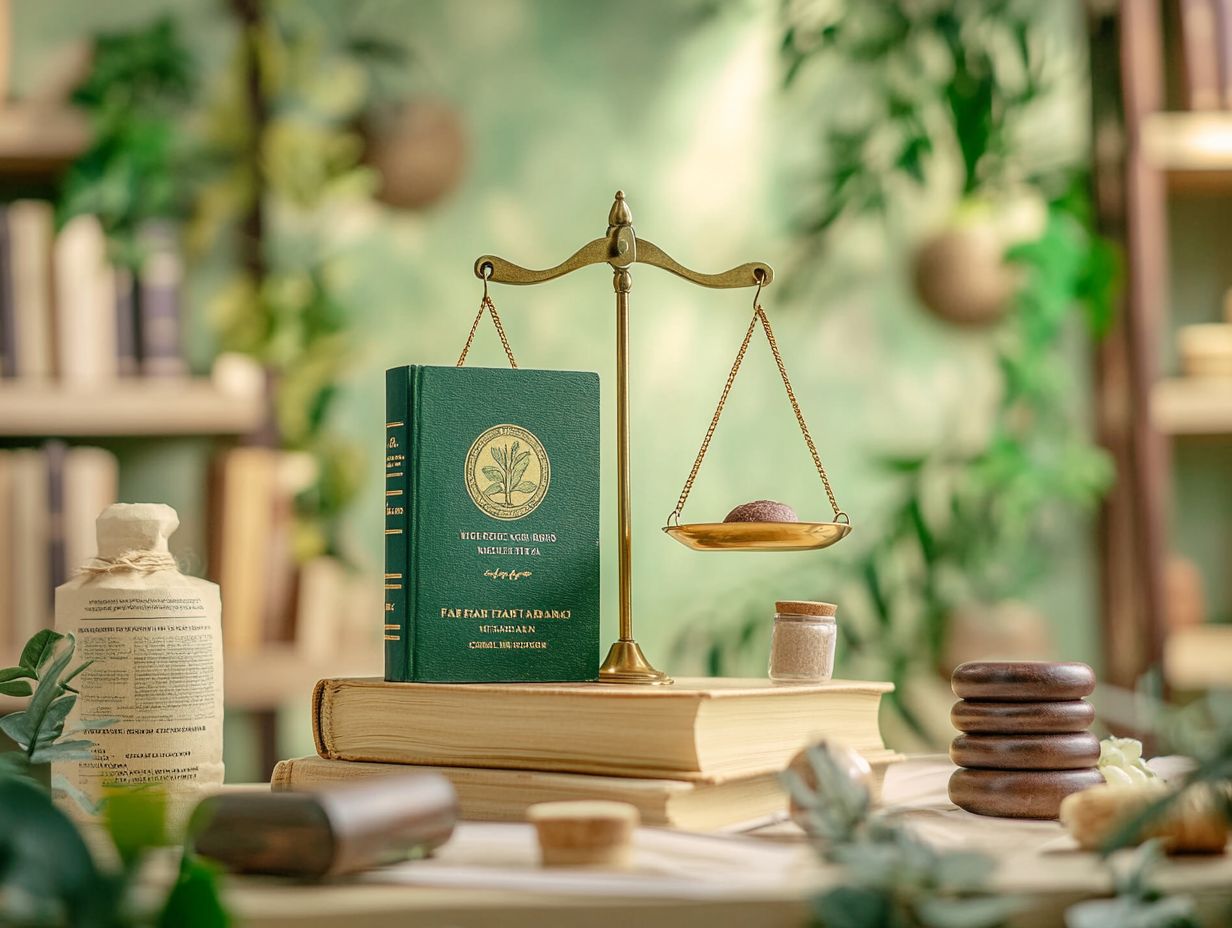
The intersection of copyright and fair trade marks a crucial point where legal protections align with ethical considerations, facilitating an important dialogue between copyright law and fair use.
This is especially relevant in contexts related to educational purposes and access to public domain materials. Understanding this interplay is vital for creating an environment where creators can safeguard their works while also giving others the power to access and utilize them responsibly.
How They Work Together
Copyright law and fair use work in tandem to establish a framework that not only safeguards the rights of copyright owners but also encourages transformative uses of creative works, especially for educational purposes where access and innovation are essential.
This intricate balance gives you the power to leverage existing works in ways that honor the rights of original creators while enriching your students’ learning experiences.
For example, when you incorporate a film clip into a lesson to analyze its themes, you engage in transformative use, adding fresh meaning and context. Likewise, remixing music for a classroom project can spark creativity while remaining within fair use guidelines.
These instances highlight how copyright and fair use can coexist harmoniously, fostering a culture of innovation that also respects the contributions of original authors.
Examples of Copyright and Fair Trade in Action
Real-world examples of copyright and fair trade illustrate the practical application of copyright law and fair use principles.
These examples show how copyright owners adeptly manage the complexities surrounding educational purposes and derivative works, skillfully balancing their rights with the broader societal benefits.
Real-World Cases and Implications
Examining real-world cases of copyright infringement unveils the intricate complexities and implications of copyright law, particularly regarding how fair use is interpreted in various situations involving online materials and educational purposes.
Consider the case of a university professor who incorporated copyrighted video clips into a media studies course, igniting a robust debate about what truly constitutes fair use in an educational context. The court ultimately sided with the professor, emphasizing that the transformative nature of the content was pivotal to the ruling.
This outcome reminds us to carefully navigate the careful balance of fair use, especially as digital content becomes ever more prevalent in academic environments. Understanding these nuances not only clarifies creators’ rights but also gives you the power to leverage materials that enhance learning while honoring intellectual property.
Challenges and Controversies Surrounding Copyright and Fair Trade
Challenges and controversies surrounding copyright and fair trade frequently arise from the dynamic landscape of copyright law. The widespread occurrence of copyright infringement and the ongoing discourse about what truly constitutes fair use further complicate this issue.
This is especially important when considering access to the public domain and the potential ramifications for the market.
Debates and Criticisms
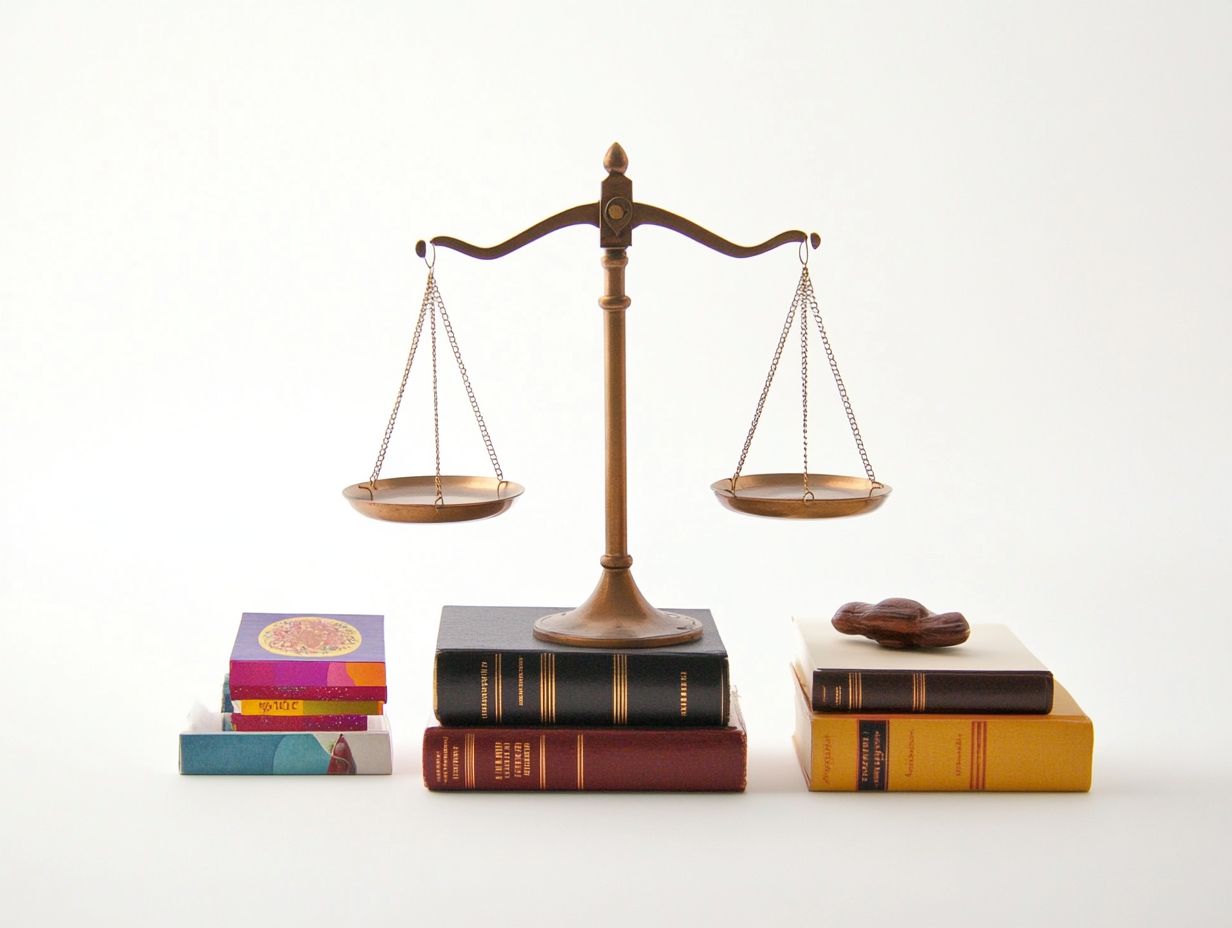
Debates and criticisms surrounding copyright law often center on the careful balance you need to maintain between protecting copyright owners and enabling fair use, particularly in educational contexts where copyright infringement could affect market value.
Advocates for educational access assert that fair use is vital for nurturing creativity and innovation. Yet, some voices within the copyright community raise valid concerns about the financial impact such practices might have on creators.
While you may see the merit in making copyrighted material more accessible in educational settings to enhance learning opportunities, critics warn that this may seriously hurt the market for original works.
This contentious dialogue underscores the complexities inherent in copyright law, as various stakeholders navigate the challenge of preserving authors’ rights while also promoting the dissemination of knowledge a cornerstone of an informed society.
Future Outlook for Copyright and Fair Trade
The future landscape of copyright and fair trade is marked by continuous shifts in copyright law. This shift includes the ongoing evolution of digital content and escalating conversations surrounding fair use.
This is particularly relevant when considering public domain and the accessibility of online materials for educational purposes. As these discussions unfold, navigating these changes will be crucial for understanding how to leverage digital assets responsibly and ethically.
Trends and Potential Changes
Trends suggest that upcoming changes in copyright law will increasingly acknowledge the importance of fair use, especially concerning online materials and uses that change the original content in a way that adds new value for educational and cultural sectors.
As digital platforms become central to both learning and creativity, it’s vital to stay informed about these exciting changes. Recent dialogues among lawmakers and industry leaders indicate a shift toward accommodating emerging technologies like artificial intelligence and machine learning, transforming how content is created and shared.
This evolving framework protects creators’ rights and sparks innovation, expanding access to knowledge in various forms. In doing so, it ensures that both creators and consumers can flourish in an increasingly interconnected society.
Frequently Asked Questions
How do copyright and fair trade relate to each other?
The relationship between copyright and fair trade is that both aim to protect the rights of creators and producers. While copyright protects the intellectual property rights of creators, understanding the relationship between trade secrets and copyrights can further highlight how fair trade ensures that producers receive fair compensation for their work and are not exploited.
How does copyright impact fair trade?
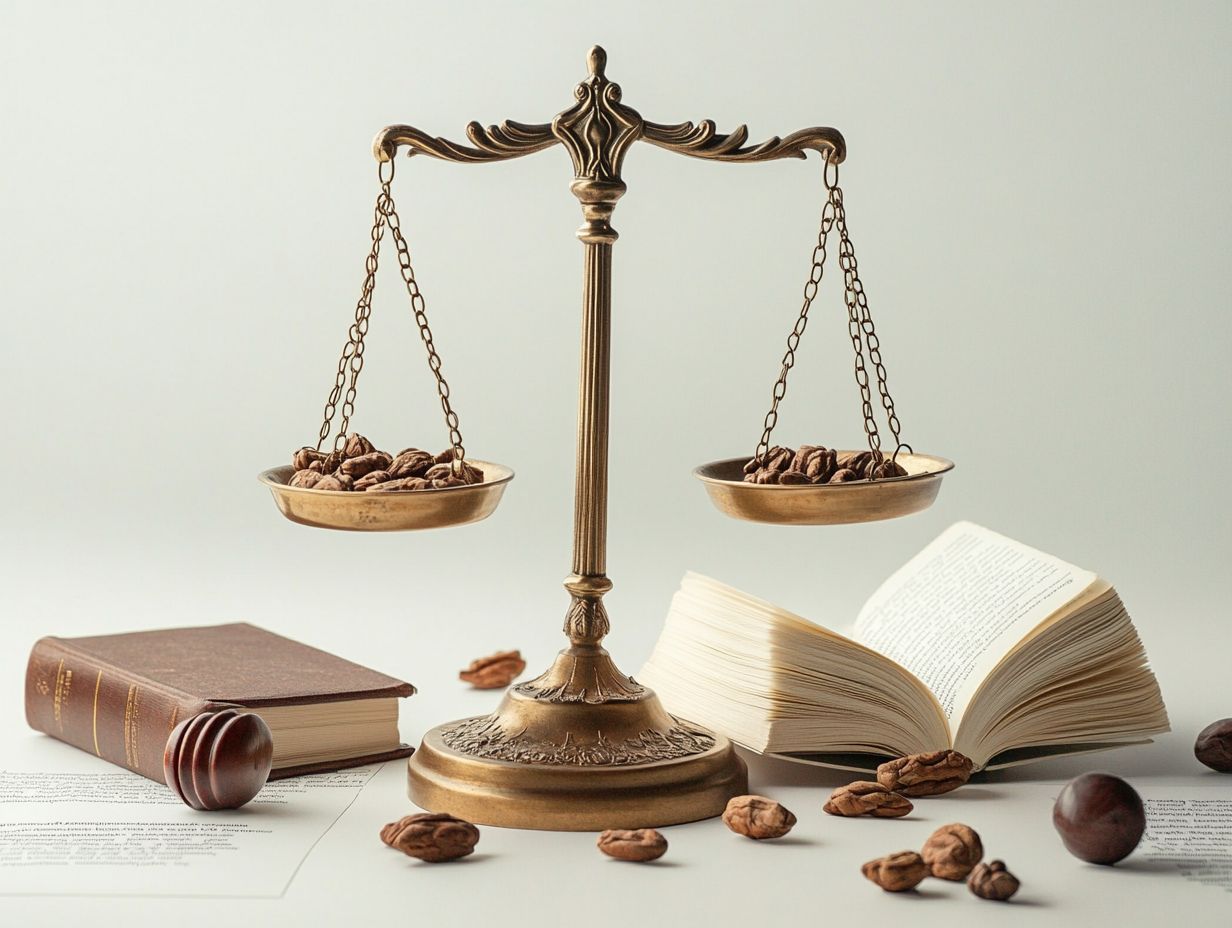
Copyright can have both positive and negative impacts on fair trade. On one hand, it allows creators to have exclusive rights to their work, which can incentivize them to produce high-quality products. On the other hand, it can also limit access to certain products, making them less accessible to consumers.
What is the role of fair trade in protecting copyright?
Fair trade plays a crucial role in protecting copyright by ensuring that creators are fairly compensated for their work. By promoting ethical and sustainable trade practices, fair trade also helps to prevent copyright infringement and the exploitation of creators.
How do international laws affect the relationship between copyright and fair trade?
International laws, such as the Berne Convention and the TRIPS Agreement, have a significant impact on the relationship between copyright and fair trade. These laws help establish and protect the rights of creators and ensure fair compensation for their work in the global market.
Are there any conflicts between copyright and fair trade?
There can be conflicts between copyright and fair trade, particularly in cases where the rights of creators and producers clash. For example, fair trade may require producers to make their products more accessible and affordable, which could conflict with the exclusive rights granted by copyright.
How can consumers support the relationship between copyright and fair trade?
Consumers can support the relationship between copyright and fair trade by being aware of the origins of the products they purchase. They should choose to support companies and brands that prioritize fair trade and ethical practices. Consumers can also educate themselves about copyright laws and respect the rights of creators and producers.


